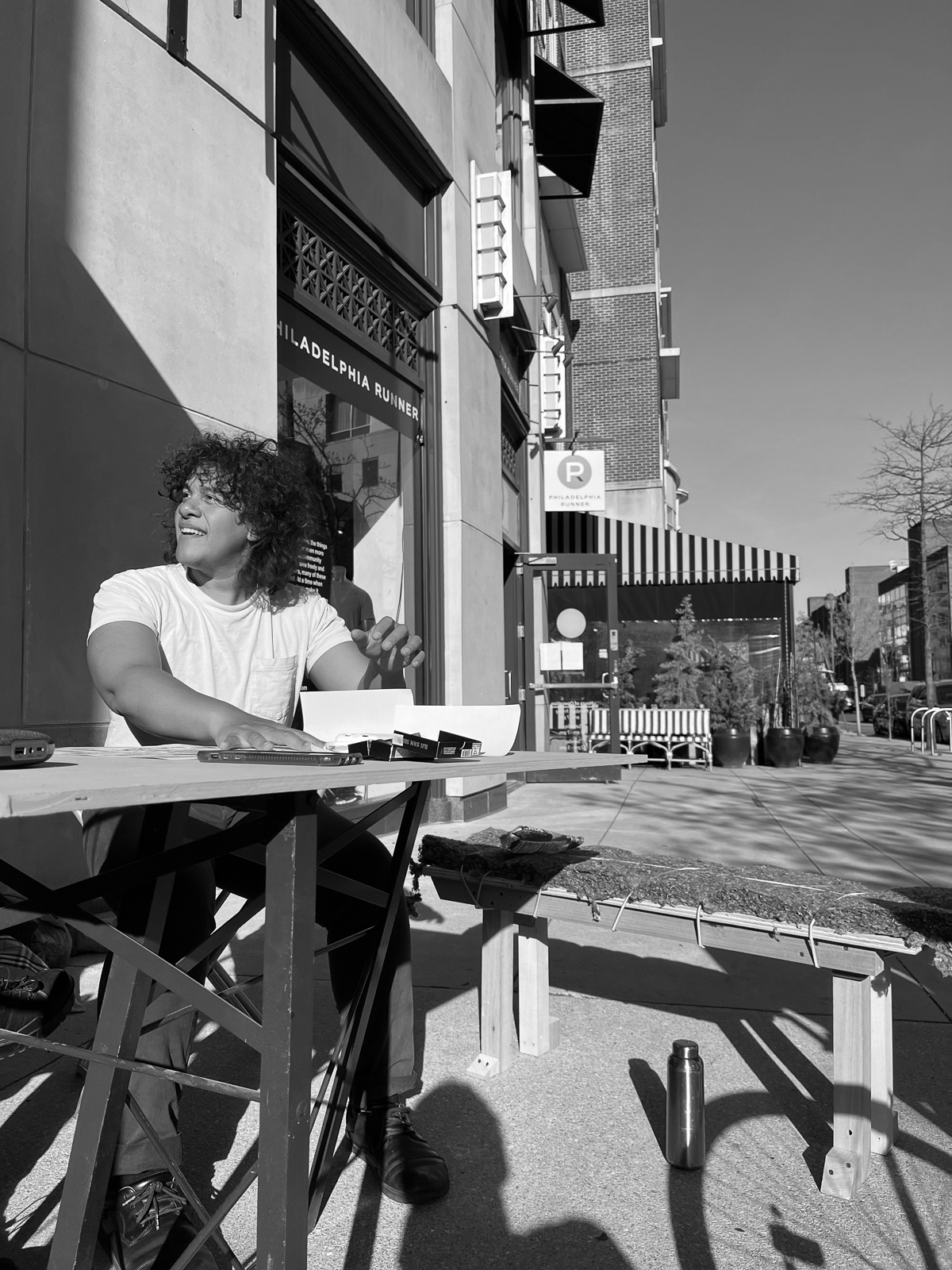
scan url
Lightweight Infrastrucure for Art
Baptiste Manet, Matthias Mushinki, Chantal Vorobei Thieves & Dale Lawrence

The mobile museum aspires to be social despite its disinterest in social impact as a measurable criterion of value. This is not to refuse the aim of social impact per se, but instead to reject the possibility that social impact can be measured and therefore exchanged as a form of capital, real or imagined. The mobile museum doesn’t apply for grants because it wouldn’t win them anyway. It does nothing new and invents nothing, but instead makes do with the ideas it finds laying on the ground. For this reason, covering ground becomes necessary.
By virtue of its placelessness, the mobile museum takes no interest in the marketplace. And its itinerant, nomadic impetus rejects private property as an infrastructural bedrock. It may have been said that infrastructure is everything that is invisible (plumbing, donors, investors, etc.), yet there is nothing invisible about the mobile museum. No back rooms leads to no back room deals; you cannot break into the mobile museum because it is never open nor closed; you cannot steal from the mobile museum because it does not own anything. At the mobile museum, loitering is cherished as a dually social and intellectual activity. Everything is free because it is yours already.
The mobile museum is founded on two premises:
- Art should be freely accessed by all. No one should be denied access to art that is relevant to their community or society due to arbitrary or financial restrictions. This stems from a view that art as performs a central role in human societies, as a cohesive force in social groups and as a primary vehicle of cultural evolution. The making or distribution of art is seen as a social act and an essential dimension of human social communication. Therefore any barrier to access must be seen as serving to create societal divisions.
- Art’s primary activity takes place within communities, therefore the celebrity-orientated platforms that dominate present art structures are not sufficient, as based on the elevating and extraction of talented or accomplished individuals from their social contexts and aid in the dissolution of communities. Instead we seek to pursue infrastructures that would see increases in the numbers of artists who are able to reach audiences within their direct social environments.
In much of the developed and overdeveloped world, there are serious spatial limitations placed on free and low-cost public gatherings. The writer David Senior notes in his foreword for 'Publication as Practice’ (Inventory Press/Ulises, 2021): “I live in the Bay Area now and it’s hard to imagine sustainable paths for people to take space here. […] The former conditions for makeshift, queer, and bohemian outposts are part of a folklore that bears little relation to present conditions. As an archivist of art spaces, I find myself picking through debris of paper scraps that point towards past moments when it wasn’t so crushingly hard to sustain space to make things, to live with others, to self-organise art. […] In the mid-1970s as new alternative spaces popped up in urban centres, most often in disused industrial spaces.”
Here the objective is to identify strategies that would see a rapid rise in the art presented in cities, urban spaces and neighbourhoods, as people are more easily able to congregate in public space, and prospective art institutions are encouraged to enter the industry at whatever level they find feasible: formally or casually, high investment or no investment.
The current environment is one that, through unmanageably high property costs in areas with high foot traffic, puts significant financial pressure on art institutions. This has the effect that they quickly become focused on commerce and funding to sustain their operations, and less socially driven as they seek to attract high net worth clients or funders. This also has the effect of creating very little space for artists who are not well suited for commercial galleries or museum and academic settings. Given that the overwhelming majority of artists are amateur and not professional, we believe commercial viability or present perceptions of cultural significance should not be a prerequisite for the creation and sharing of art.
In Africa, factors limiting the proliferation of low cost independent art spaces are more complex and varied. In some places cost limitations on public gathering are not a major concern, though these freedoms must be protected as capitalist development advances. Some areas of concern include access to digital networks that are affordable and favour local content. South Africa has one of the highest costs of data in the world, disproportionately affecting prepaid data users. Safety is a factor, where staff of an outdoor museum might become targets for criminals. Here a hybrid model is pursued, making use of under-utilised spaces in public buildings, digital networks, and mobile institutions.



To achieve this goal, three formats of lightweight art institutions are imagined:
- Mobile institutions: portable structures set up and removed daily, by foot (with trolly), by bicycle or by car.
- Institutions occupying networks of underused spaces: foyers, parking lots, street-facing windows or walls and open spaces in pedestrian-frequented streets, social venues, traffic islands
- Local virtual networks: Closed-circuit wifi networks accessed , online
- Low cost print publications: ‘zine' publisher and distribution networks
The mobile museum is a low-to-no-cost portable institution. It consists of a table with trestle legs, two fold up stools for staff, a bench for visitors, and a chalkboard sign attached to a goods trolley for support, to announce the current exhibition. All of these items can be loaded on the trolley and wheeled on foot to a location. The locations are not set, but are intentionally changing within walking distance from a central location, as to reach a broad audience in a range of neighbourhoods, so as not to favour one neighbourhood over another. The atmosphere of the museum is social and, hopefully, approachable. The desire is that passers by will stop by to look at the art and chat. There are no tall white walls and frameless glass doors to intimidate. There is no pretence that the work presented is good. The desire is simply for the museum operators to hang out for a few hours, show some art to brighten people’s days, stimulate their minds, engage in conversation and make new friends. And to not have to worry about much more than that. Basically the desire is to make running and art institution easy and fun, with the hopes that there may be many more, thus allowing many more artists to show work, and many more people to see it.
It is intentionally low cost and easy to assemble. It was built over a period of three hours and used no new or expensive materials. Mobile institutions must be ready to have their institutions confiscated, so it is important that it be easily replaceable.
Copy welcome (2022) No rights reserved.
